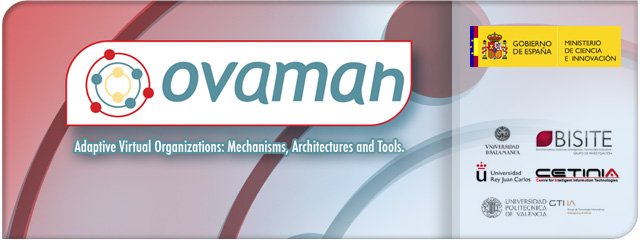Nowadays, having software solutions at one's disposal that enforce autonomy, robustness, flexibility and adaptability of the system to develop is completely necessary. The dynamic agents organizations that auto-adjust themselves to obtain advantages from their environment seems a more than suitable technology to cope with the development of this type of systems. These organizations could appear in emergent or dynamic agent societies, such as grid domains, peer-to-peer networks or other contexts where agents dynamically group together to offer compound services. However, although in the theoretical level technology seems to be able to allow the development of this new kind of systems, to investigate in theories, models, mechanisms, methods and tools to develop systems with reorganization capabilities that provide them with the ability to adapt themselves to environmental changes is still necessary.
The aim of this project is to provide a virtual organization with autonomy capabilities that allow it to have a dynamic response in view of potential changing situations by means of the adaptation or evolution of the organization. In this way, it will be able to detect situations of interest (e.g. operation errors) and to manage them maximising the adaptation flexibility and capacity. The organization adaptation implies, between other aspects, its norms, agreements, commitments and topologic structure. Therefore, the adaptation of the system can be carried out at a different granularity levels. At a general level, the fact that environmental changes in any type of system can give rise to the need of certain adaption or reorganization is obvious. However, to determine under which situations the agent or the organization decides to modify its behaviour and to estimate when a partial or a complete change in the current organizational structure is necessary, is extremely difficult. It must be said that the stability of a multi-agent system is a crucial aspect when developing this type of systems. However, a possible reorganization can affect notably to this stability, which makes even more crucial to detect which are the conditions that give rise to the necessity of a system reorganization even at the risk of affecting its stability. Thus, to provide the developer during the system development process with precise measures that ensure that the benefits and usefulness of adapting the system is greater than not doing so is necessary. In this way, the possibility of designing and implementing suitable mechanisms to perform these measurements can be taken into account during the system development process.





